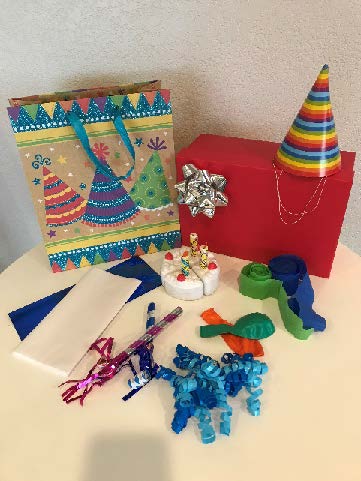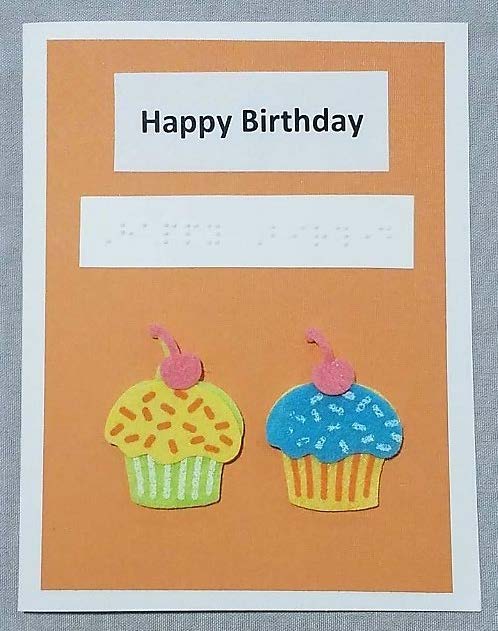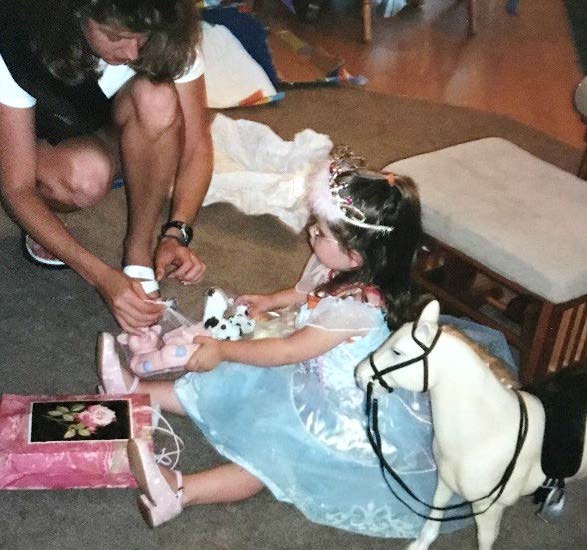How to Plan a Successful Birthday Party
Birthday parties and other special occasions are an important part of our culture but can be challenging for children with special needs. Parties are noisy, the setting is typically unfamiliar, people are talking and moving around the room, and unexpected decorations are hanging everywhere. There is a lot to make sense of for a young child with a visual impairment. Your child’s energy may be devoted to making sense of the commotion, leaving little left for having fun. Here are some proven strategies that will make birthday parties and other similar events more enjoyable for both you and your child.
Communication Is Key
The moment you start planning your child’s birthday or you receive an invitation to attend someone else’s, start talking about the experience right away so your child knows what to expect. Explain why birthdays are celebrated and what happens at a party. There may be games, snacks, cake and ice cream, giving gifts, unwrapping gifts, goodie bags, party hats, and decorations. Talk about the event and what it may be like in terms of noise, numbers of people, and possible activities.
Practice singing “Happy Birthday” together. There are several ways you can teach the song so it’s meaningful to your child.
You can even have a pretend party with your child’s favorite dolls and stuffed animals so your child feels more comfortable with the activities and can anticipate what may happen Read About Birthday Parties
Another way to prepare your child is to read books together about birthday parties before you go. Here are some of our favorites:
Explore with Your Senses
Encourage your child to touch the different materials. Talk about the different textures and even the sounds they make – the shiny wrapping paper, the crinkly tissue paper. Blow on a party horn to hear if it sounds loud or soft.
Even candles can be experienced ahead of time. Let your child touch an unlit candle – can you feel difference between the wax and the wick? Explain why candles go on birthday cakes and are blown out. Talk about HOW to blow out candles and other safety considerations like not touching or leaning in too close to the open flame. These activities offer the perfect time to introduce new vocabulary and concepts to your child.
Wrapping Gifts
Why do we wrap gifts? To make them a surprise for the person receiving the gift. The gift can’t be seen by anyone until it’s unwrapped. This might be a difficult concept to explain to a child who is visually impaired.
Allowing your child to help with wrapping gifts gives them the opportunity to build important skills such as object permanence (an object still exists even if it’s covered up or hidden) and joint attention (shared interest in an object or event), to increase vocabulary (see list above) and to set the stage for more complex pretend play. Wrapping gifts also provides lots of great opportunities for using fine motor skills: folding, ripping, cutting with child-size scissors, using a tape dispenser, removing the sticker from the back of a bow, tying ribbons, etc. Use fun gift wrap like mylar or tissue paper as they have an interesting texture and make lots of sound – many children love this! Use tape and ribbons sparingly. It’s hard enough to unwrap a present; don’t make it more difficult for the child to open it. Gift bags are often much easier and don’t take as long to open. This may be a consideration during the holidays or if there are many gifts to be opened. Take toys out the packaging before gift-wrapping them. It’s no fun for a child to open a gift only to find it’s in a box or plastic that he or she can’t feel through. It’s hard to wait patiently for a toy to be removed from the packaging. Insert batteries so the gift “works” as soon as it’s unwrapped.
Opening Gifts
If necessary, familiarize your child with the process of opening gifts by practicing on a gift or two before the party. Talk about how to open a present, taking some time to look at the gift before setting it down and moving onto the next gift. Your child may not realize that there are multiple presents to be unwrapped or that guests are excited to watch the process.
Build extra time into the process of unwrapping gifts to give your child a few minutes to explore and feel each one before it’s taken away and replaced with another unwrapped gift.
Practice manners! Role play, saying “Thank you!” after each gift has been unwrapped and other appropriate responses to gifts. What should your child say if he gets something he already has or isn’t particularly fond of?
Let an adult sit near your child to describe what’s happening, what the gifts are and help hone in on your child’s response. This person can help put bows in a pile or collect wrapping paper for recycling. Give the child a bit of time to feel the gifts – remember it may be difficult for a young child to let go of the gift without playing with it first. It’s Better to Give Than Receive
Giving gifts is a totally different concept than receiving gifts. Too often, a child with visual impairment is in the position of recipient but is not as tuned in to the joy of giving, nor of understanding how happy receiving a gift can make the recipient.
Shop together for a gift and let your child help with wrapping and making the card (print or braille). It’s OK if the gift isn’t wrapped perfectly! The recipient will surely appreciate the effort. This is also a great opportunity to talk about giving to others. Talk to your child about what makes him or her happy and then what makes Daddy, Mommy, and siblings happy. How can these things be turned into gifts for each of them? Consider homemade gifts – your child’s picture or handprints, cookies he or she helped make, performing a song – so your child learns that gifts don’t always need to be purchased. What to Wear to a Party
And Don’t Forget
How to Celebrate Your Child’s First or Second Birthday
If it’s your child’s first or second birthday, the party you plan might celebrate your own survival of those first years, or even your child’s if they’re medically fragile. Raising a child with a visual impairment is a huge accomplishment!
Rather than throwing a big party, you can start introducing the concept of a birthday party in fun, manageable pieces to a very young toddler who is blind or visually impaired. Think about how you can celebrate with mini activities throughout the day or week. Here are some activities you can do with your child:
|
|
By Paula Landry, Early Intervention Teacher of the Visually Impaired, co-founder of A Shared Vision, and mother of a daughter who is blind. Click HERE for PDF.
|




